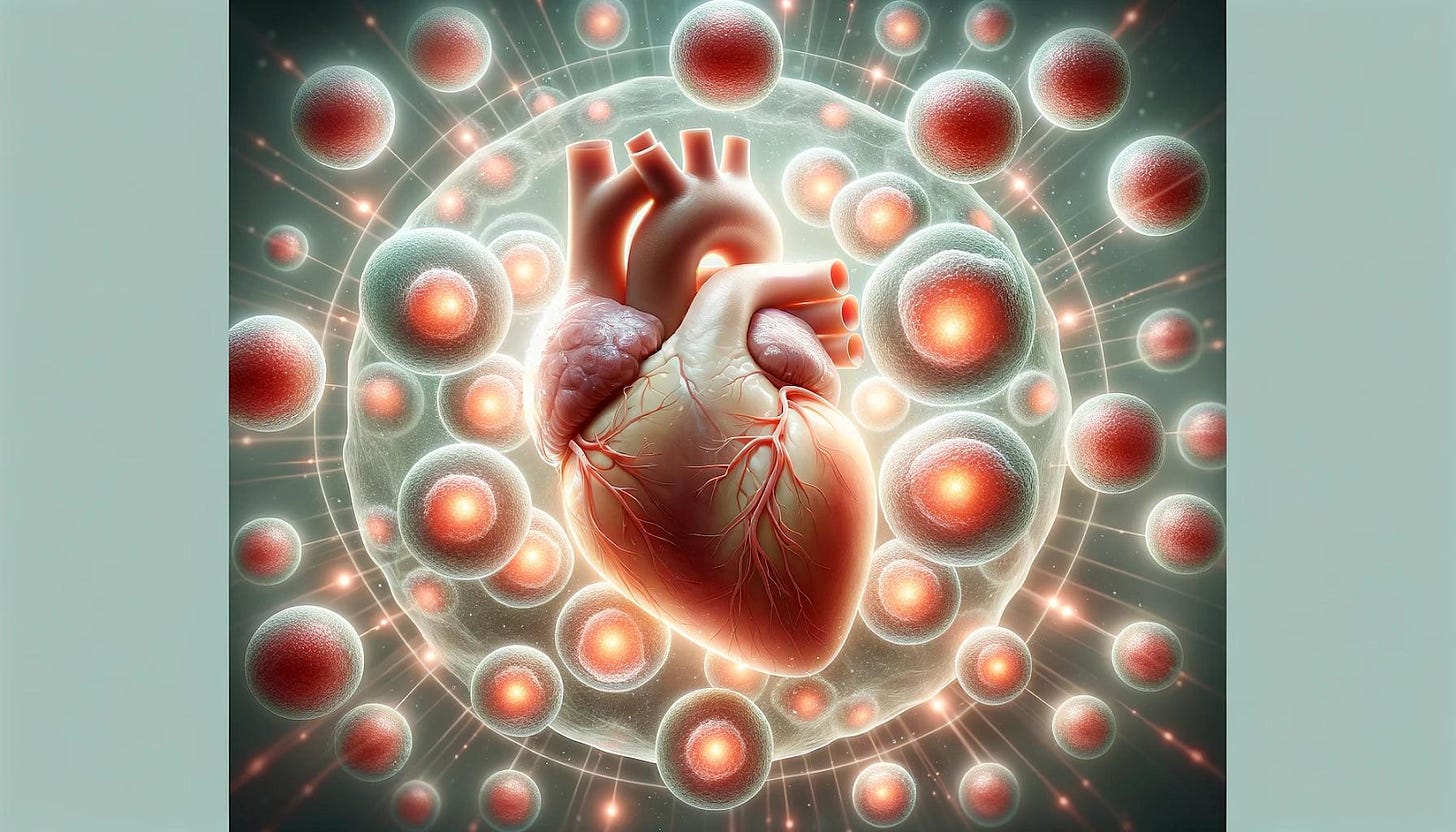Stem Cell Therapy For Treating Heart Failure
Written by Shrishti Harish
This article explores the potential efficiency of Stem Cell Therapy for heart failure Though relatively new to the medical field, it has exhibited promising results and can be a game changer in treating heart failure. Stem Cell Therapy utilizes stem cells which can differentiate into other cell types and replace/repair damaged cells and tissues to improve the quality of life.
Stem Cell Therapy is also referred to as regenerative medicine. Somatic (stem cells) are found in bone marrow, brain, blood vessels, skin, teeth, and heart. Many types of stem cells include embryonic, adult, and perinatal stem cells. Embryonic stem cells are the most common somatic cell type used in Stem Cell Therapy. Embryonic cells are favored over the other cells because they are pluripotent. Pluripotent cells can develop into any type of cell in the human body. This allows the embryonic cells to regenerate affected tissues and organs. Scientists harvest stem cells from a donor and segregate the cells from the donor’s blood using a centrifuge device (Mayo Clinic Staff, 2024). The stem cells are manipulated to differentiate into the desired cell type and once matured, they are implanted in the affected area. The newly specialized cells initiate a repair response and restore the structure and function of the injured site.
Stem Cell Therapy has effectively treated cancer cells through a bone marrow transplant. A bone marrow transplant is a procedure in which stem cells are injected into your body to replace the bone marrow that’s not producing stem cells. Similarly, somatic cells can also be used to treat heart failure. Heart failure is when the heart’s muscles can’t pump enough blood to supply the body with oxygen. The traditional treatments for heart failure are angiotensin-converting enzyme (ACE) inhibitors, surgery, and lifestyle changes. Additionally, stem cells can be differentiated into cardiac cells and injected into the heart to restore heart function and strengthen the heart.
Heart Failure can occur for numerous reasons such as eating diets with too much sugar and sodium, high blood pressure, lack of exercise, alcohol & drug abuse, and coronary artery diseases. This causes the blood not to flow properly and causes fluid to build up around the lungs, making it very difficult to breathe. Conditions like coronary artery diseases can build up plaque in the arteries which supply the heart with nutrients and oxygen. Common symptoms of heart failure are shortness of breath, wheezing, swelling in arms & legs, and chest pain (Mayo Clinic Staff, 2023). Heart Failure is a progressive disease that tends to get worse over time if left untreated.
Multiple types of stem cells are used to treat heart failure. Typically, doctors use Induced Pluripotent Stem cells (iPSCs) and Adult stem cells. According to Cona, “iPSCs are generated by reprogrammed adult cells, such as skin cells, to revert to a pluripotent state, and can potentially offer an unlimited source of stem cells that can be used to generate specific cardiac cell types for heart failure therapy” (Cona, 2023). Once the iPSCs are implanted in the damaged area, they initiate a repair response and assist in restoring the function of the heart. Adult Stem Cells are found in numerous tissues in the body and are obtained from adipose (fat tissue), and the umbilical cord. They can differentiate into heart muscle cells that will help in cardiac regeneration.
Once the stem cells are harvested from a donor, they are transported into a lab to be purified from any toxins and waste. The stem cells are then manipulated to differentiate into cardiomyocytes (heart cells). Different types of injection methods are selected to implant the cells into the heart based on the severity of the heart. Common methods include Intramyocardial injection, in which the stem cells are directly injected into the heart muscle, and intracoronary injection, in which the cells are injected into the coronary arteries. If we were to proceed with the intracoronary injection, a catheter would be placed in the groin and go through a blood vessel to transport the stem cells into the coronary arteries (Langmaid, 2022).
After the stem cells are administered into a patient’s body, the patient will be closely monitored for side effects and indications of improvement. Signs of short-term improvement will likely be noticed in 1-3 months, with cardiac imaging techniques. After 6 months, more progress will be observed. This could be a reduction of dead heart tissues and inflammation. Blood flow and tissue repair can also be significantly enhanced. Although the results might differ for each patient, stem cell therapy has shown immense promise and further research & clinical trials are being conducted to refine the treatment and patient mortality.
References:
Written by Shrishti Harish from MEDILOQUY


